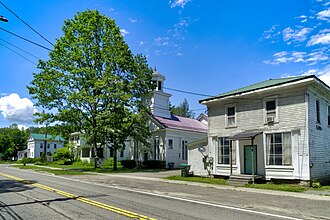Discover Your Roots
SIGN UPDiscover Your Roots
SIGN UPLisle is a gender-neutral name of French origin, meaning "Of The Island." It is derived from the French word "l'isle," which translates to "island" in English. The name is associated with the concept of islands and can evoke a sense of tranquility and natural beauty. In addition to being a given name, Lisle is also used as a surname for various notable individuals. It has also been used to name several locations, including towns in Australia, France, and the United States. Furthermore, Lisle has connections to the music industry and textiles, with references to a band and a type of cotton. Overall, the name Lisle carries a sense of geographical and cultural richness, reflecting its French origins and diverse usage across different domains.

Lisle Astor Wilson Jr. (September 2, 1943 – March 14, 2010) was a prominent American actor best known for his role as Leonard Taylor on the ABC sitcom That's My Mama, which aired from 1974 to 1975. Throughout his career, Wilson showcased his talent in various films, including Brian De Palma's horror film Sisters (1972) and The Incredible Melting Man (1977). He also made notable guest appearances on popular television shows such as Lou Grant, The White Shadow, and Falcon Crest. In addition to his acting prowess, Wilson served as the Director of the American Academy of Dramatic Arts West in Pasadena, California and later transitioned to teaching Vocal Techniques to aspiring Broadcasters at the Academy of Radio and Television Broadcasting in Huntington Beach, California. Lisle Wilson's legacy continues to inspire many in the entertainment industry. He passed away on March 14, 2010, following a battle with a brain tumor. For more information on his works and legacy, visit Lisle Wilson's IMDb page and obituary.

Lisle Corporation, an American manufacturer of auto mechanic's specialty tools, has been a family-operated independent private corporation since its establishment in 1903. Based in Clarinda, Iowa, the company offers over 400 different automotive tools and related items, including the popular Jeepers Creepers line of mechanic's creepers. Lisle's products are available at various US retailers such as Carquest Auto Parts and Sears.The company's history dates back to its founding by C.A. Lisle, initially producing horse-powered well-drilling machines before venturing into the automotive market with an aftermarket master vibrator for the Ford Model T engine. Over the years, Lisle expanded its product range to include an engine valve refacer and a line of magnetic oil pan drain plugs, which gained recognition during World War II. After being honored with the Army-Navy "E" Award in 1943, Lisle shifted its focus to specialty automotive tools, marking a new chapter in its successful journey.For more information, you can visit Lisle Corporation's official website.

Lisle William "Liz" Blackbourn, born on June 3, 1899, was a prominent American football coach known for his tenure as the head coach of the Green Bay Packers and Marquette University in Milwaukee. Hailing from Beetown, Wisconsin, Blackbourn excelled in football during his time at Lawrence College in Appleton, subsequently venturing into coaching. His illustrious career saw him achieve significant milestones, including a remarkable 141–30–6 record as the head coach at Washington High School in Milwaukee. Blackbourn's coaching prowess extended to the college level, where he made meaningful contributions to the football programs at Wisconsin and Marquette University.Notably, Blackbourn's tenure with the Green Bay Packers saw him make several significant draft picks, including future hall of famers like Forrest Gregg, Bart Starr, and Paul Hornung. Despite his challenges, Blackbourn's impact on the football landscape was undeniable. After his coaching career, he continued to contribute to the sport as a scout for professional football teams. In recognition of his outstanding achievements, Blackbourn was inducted into the Wisconsin Athletic Hall of Fame in 1978. He passed away in 1983 in his hometown of Lancaster, leaving behind a lasting legacy in the world of football.

Lisle is a quaint village nestled in Broome County, New York, with a population of 348 as of the 2020 census. Originally settled by American Revolutionary Army veterans in 1791, the village was known as "Mud Lick" due to the salt crystalizing on the surrounding mud. However, it was later renamed "Lisle" in honor of General Lafayette's hometown in France. The village experienced rapid growth, with various industries and establishments such as grist mills, tanneries, and a school sprouting up. Lisle's first post office was established in 1802, and the village was officially incorporated in 1866. Noteworthy landmarks and initiatives include the Lisle Academy, the founding of the Lisle Gleaner newspaper, and the establishment of the Lisle Free Library by Herbert H. Franklin. Additionally, the Happy Valley Home for boys and girls was founded in 1915 and later sold to the Lisle Christian Conference Center. In 1918, Florence B. Chauncey made history as the first woman in New York State to vote at the Lisle Village Hall. Lisle has a rich history with significant events, including a notorious bank looting in 1926.

Lisle, derived from the French city Lille, was a type of finish applied to produce smooth and even yarns, commonly used for underwear and hosiery. Long-staple fibers like Egyptian cotton were rapidly passed through gas flames to eliminate fuzzy and protruding fibers, adding gloss, smoothness, and evenness to the yarn. The resulting yarn, known as "Lisle yarn" or "Lisle thread," was plied, high-twisted, and gassed combed yarns of long-staple cotton. Additionally, the lisle finish was applied to hosiery fabric using a dilute acid solution and tumble drying to remove fuzziness and loose ends, followed by neutralization with an alkaline solution. Lisle found extensive use in the manufacturing of underwear, hosiery, stockings, and sports wear. The term "Lisle" was formerly known as "Lille" and played a significant role in the textile industry.
All images displayed on this page are sourced from Wikipedia or Wikimedia Commons.We use these images under their respective Creative Commons or public domain licenses. Wherever applicable, author attributions and license information are provided. If you believe an image is used incorrectly or outside its license terms, please contact us so that we can review and correct the issue.